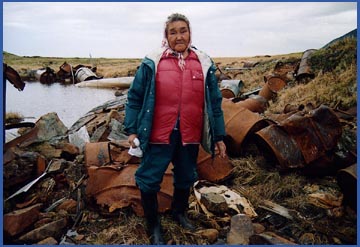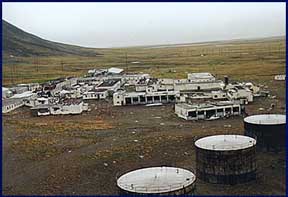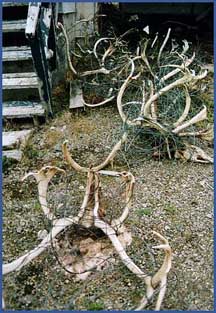| ||||||||||||
Northeast Cape, |
 |
Critical
Cleanup Target |
||||||||||
 |
Annie
Alowa, a Yupik elder
from the Saint Lawrence Island community of Savoonga, served as a village
health aide in her village of Savoonga for 25 years. She says: "I want
this to be cleaned up before it is too late. It used to be a good hunting
and fishing place, also for greens and berries now people are scared to
pick anything from there." Ms. Alowa observes that there have been 13
deaths from cancers among the people who spent a lot of time at Northeast
Cape and others have been diagnosed with cancers. She also believes there
are birth defects and premature births that might be connected to the
contamination problems at Northeast Cape. |
|||||||||||
| The Air Force
acquired the strategically located Northeast Cape site in 1952 and
operated it as a surveillance station as part of the North American
Air Defense Command from 1952-1972. Beginning in 1982, the Navy used the area as a White Alice communications site. Within an area that encompasses approximately 9 square miles, Army Corps of Engineers contractors have identified at least 23 contaminated sites that require environmental investigation and cleanup. Contamination includes fuel spills totaling over 220,000 gallons, solvents, heavy metals, dioxins and furans, asbestos, and PCBs. One of the several barrel dumps contains approximately 29,500 drums. |
||||||||||||
 | ||||||||||||
 |
||||||||||||
| Large bales of copper wire left on the tundra at Northeast Cape have trapped and killed by starvation many reindeer. | ||||||||||||
|
||||||||||||